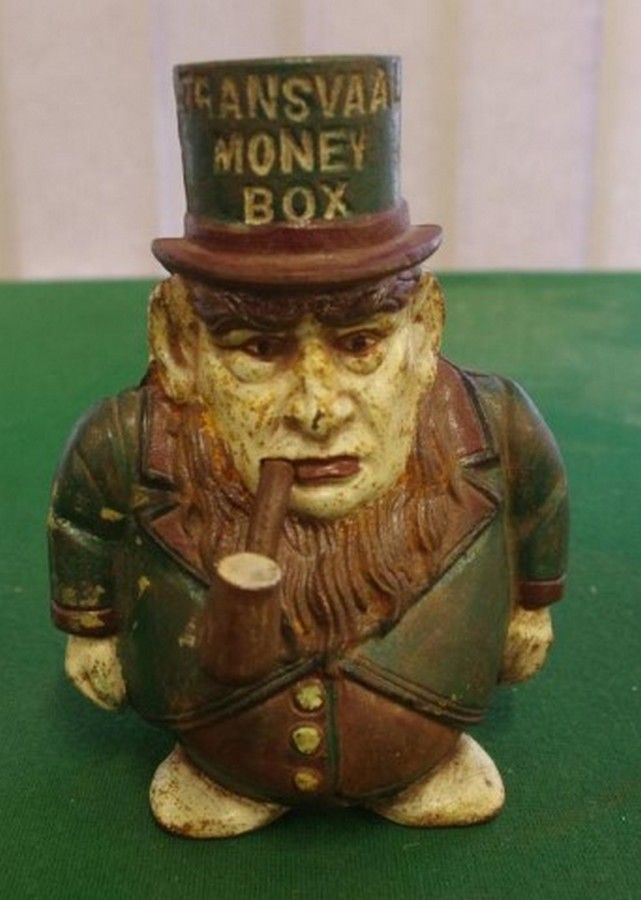


The Haeusler family were one of several German families to migrate from South Australia to Wodonga in the 1860s. The Haeusler family migrated from Prussia (Germany) to South Australia in the 1840s and 1850s, before purchasing 100 acres of Crown Land made available under the Victorian Lands Act 1862 (also known as ‘Duffy’s Land Act’) in 1866 in what is now Wodonga West.

The collection comprises manuscripts, personal artefacts used by the Haeusler family on their farm in Wodonga, and a set of glass negatives which offer a unique visual snapshot of the domestic and social lives of the Haeusler family and local Wodonga community. The Wodonga Historical Society Haeusler Collection provides invaluable insight into life in late nineteenth and early twentieth century north east Victoria.

Born August 8th LINCOLN 1850esam, money box, prattware One chimney is damaged.as are the four base corners. The black inscription on the front is artistically written. The edges of the base feature blue crosses interspersed with yellow dots. There is a pink colored figure standing in one corner of the base.
#Victorian cast iron money box windows#
The primary colour of the cottage is white It has two storeys, the upper one has six lead light windows framed with yellow and the ground storey has two brown doors with lead light fan windows. It has a blue tiled roof with yellow edges, a slot for coins at the back.and two chimneys at each end of the building. This glazed piece of pottery is a child's money box modelled on an English Methodist Chapel. This money box is of considerable significance because of its age, its artistic attractiveness and its connection to the Esam family who were prominent in Warrnambool in the 19th century. Sarah Ann Esam died in Henna Street, Warrnambool in April 1915 on Easter Monday. His best known windmill is the one he made for "Lyndoch". John Esam became well known in Warrnambool as an engineer and windmill maker. Her parents John and Ann Esam emigrated to Australia in 1865 with six children one of whom was Sarah. It was a gift to a young girl, Sarah Ann Esam born in 1850 in Lincoln, England. This money box is believed to be an antique Prattware piece modelled on a n English Methodist Chapel. Users are advised to contact the source organisation to discuss appropriate reuse. Reuse of any Aboriginal or Torres Strait Islander material on this site may require cultural clearances. The length of this time varies and is determined by the community. Users of this site should be aware that in many areas of Australia, reproduction of the names and photographs of deceased people is restricted during a period of mourning. These views are not necessarily the views of Victorian Collections. Or recorded but may not be considered appropriate today. Some material may contain terms that reflect authors’ views, or those of the period in which the item was written Content also may include images and film of places that may cause sorrow. Please be aware that this website may contain culturally sensitive material - images, voices and information provided by now deceased persons.Ĭontent also may include images and film of places that may cause sorrow.Īboriginal and Torres Strait Islander people are advised that this website may contain culturally sensitive material - images, voices and information provided by now deceased persons. We celebrate the history and contemporary creativity of the world’s oldest living culture and pay respect to Elders - past, present and future. We acknowledge the Traditional Owners of the place now called Victoria, and all First Peoples living and working on this land.


 0 kommentar(er)
0 kommentar(er)
